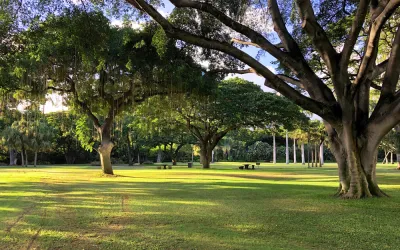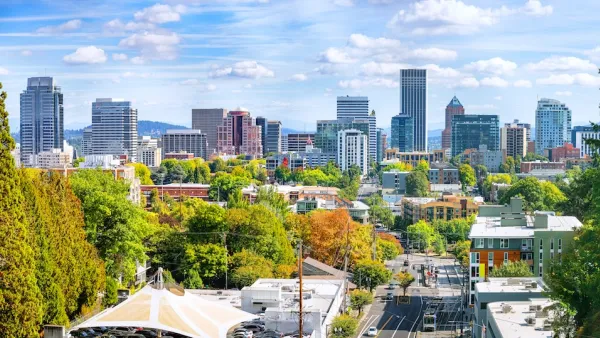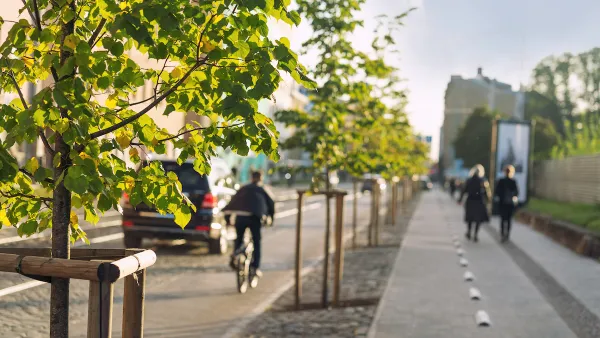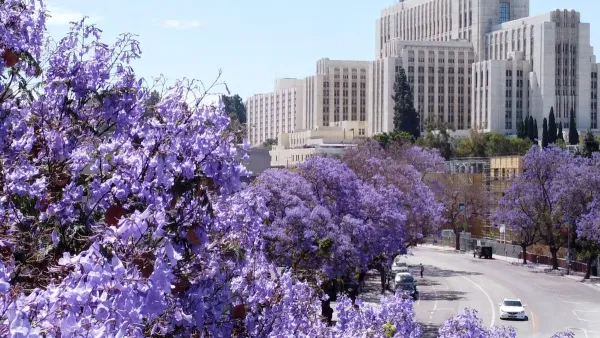Former University of Hawaii professor Tom Dinell makes a case for the need for more trees in Honolulu, with recommendations that can be applied in other cities as well.

Even a tropical paradise like Honolulu has to expand its urban forest. In this commentary, Tom Dinell argues that Honolulu needs more trees now to combat rising temperatures in urban areas.
Dinell summarizes the well-documented benefits of trees as follows: "They provide shade; they cool the air via evapotranspiration; they absorb carbon dioxide; they reduce pollutants; they replenish the aquifer; they reduce storm runoff; they increase property values and reduce home air conditioning costs; they provide a home for birds and other wildlife; they improve the environment for learning, for medical recuperation, and for traffic safety; they improve psychological well-being; and besides all that they beautify the city, soften the impact of concrete, and provide visual happiness."
Dinell then explains what is needed to drastically increase the number of trees in Honolulu's streets, parks, commercial areas, schools, and homes. Specifically, the city needs:
- A citizenry that wants and demands trees, here, there and everywhere. Elected leaders, civil servants, commercial property owners, developers, and all residents are going to have to want trees and want them now.
- Public and private investment in trees up front. Studies demonstrate that there is a three to four dollar payoff for every dollar invested in trees.
- Increased capacity at nurseries, ensuring that they are well-financed to supply the stock and type of saplings that are needed. There is a great variety of trees that can contribute to Honolulu’s urban canopy.
- Professional guidance of trained and talented arborists and landscape architects to know which tree to plant where and make sure that the tree receives the right kind of loving care as it grows into maturity.
- Reassurance to the naysayers who complain that they have to rake up leaves or trees block their view (they don’t if they are properly located) or trees will interfere with their photovoltaic complex (again it is a matter of proper placement).
Dinell is the founder and president emeritus of Trees for Honolulu’s Future and emeritus professor of Urban and Regional Planning at the University of Hawaii Manoa.
FULL STORY: Honolulu’s Need For More Trees Is Now

National Parks Layoffs Will Cause Communities to Lose Billions
Thousands of essential park workers were laid off this week, just before the busy spring break season.

Retro-silient?: America’s First “Eco-burb,” The Woodlands Turns 50
A master-planned community north of Houston offers lessons on green infrastructure and resilient design, but falls short of its founder’s lofty affordability and walkability goals.

Delivering for America Plan Will Downgrade Mail Service in at Least 49.5 Percent of Zip Codes
Republican and Democrat lawmakers criticize the plan for its disproportionate negative impact on rural communities.

Test News Post 1
This is a summary

Test News Headline 46
Test for the image on the front page.

Balancing Bombs and Butterflies: How the National Guard Protects a Rare Species
The National Guard at Fort Indiantown Gap uses GIS technology and land management strategies to balance military training with conservation efforts, ensuring the survival of the rare eastern regal fritillary butterfly.
Urban Design for Planners 1: Software Tools
This six-course series explores essential urban design concepts using open source software and equips planners with the tools they need to participate fully in the urban design process.
Planning for Universal Design
Learn the tools for implementing Universal Design in planning regulations.
EMC Planning Group, Inc.
Planetizen
Planetizen
Mpact (formerly Rail~Volution)
Great Falls Development Authority, Inc.
HUDs Office of Policy Development and Research
NYU Wagner Graduate School of Public Service





























